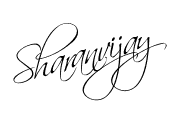The next time you have an afternoon free, dig out that old box of cassette tapes you squirreled away in the basement. It's time to resurrect your collection of Phil Collins albums, Stephen King audiobooks, and other treasures of the 80s. With a few simple tools and your PC, you can turn these forgotten jewels into digital audio files that will live forever.
There's more to this idea than a trip down memory lane. Now that tape decks have all but disappeared from car stereos and Walkmans are a thing of the past, there's really no other way to listen to cassettes, forgotten or otherwise. You invested big bucks in these things, so why not get your money's worth? Here's how to bring your tapes into the digital age.
Why Bother?
Okay, I'll fess up: tapes sound like doo-doo compared with CDs and digital downloads. Sure, they were fine when we didn't know any better, but they're expressly an analog media. If you're a fidelity snob, you probably won't be happy with the quality of your converted Def Leppard tapes.
That said, we're not talking AM radio, here—if the tapes are in reasonably good condition, you can expect reasonably good audio. And if you're resurrecting audiobooks, kids' tapes, out-of-print material or even bootleg recordings, fidelity really isn't an issue. The ultimate goal is simply to let these tapes be heard again.
In fact, once you learn how to bring tapes into the digital age, you may want to start looking for cheap deals on them. By trolling garage sales, eBay and other resale sources, I've scored serious bargains on audiobook cassettes that cost a fortune on CD. So this is not only a practical exercise, it's potentially a money-saving one as well.
What You Need

To copy your tapes to your PC for digital archiving, you'll need exactly three things:
- A cassette player. I dug out my old Walkman, which I found perfectly suited to the task, but you could also use a tape deck.
- A stereo patch cord. Specifically, you need a cable that connects your Walkman's headphone jack to your sound card's line-in jack. You can get one at Radio Shack for around $5. If you're connecting a tape deck, you may need an adapter to accommodate its larger headphone jack.
- Audacity, an open-source, cross-platform program that makes simple work of recording and editing audio. It's available for Windows, Mac, and Linux. If you plan to turn your tapes into MP3 files, make sure to get the LAME MP3 encoder as well; there's a link to it on the Audacity download page.
Getting Started
After installing Audacity, you'll need to tweak a few settings. First, visit Preferences (accessible under the Edit menu) and make sure Channels is set to two. In the same window, hit the File Formats tab and configure Audacity for use with the LAME MP3 encoder you downloaded. Click the Find Library button, then navigate to the folder on your hard drive containing the file lame_enc.dll.
Finally, choose a bit rate for your recordings. 128Kbps is more than ample for audiobooks, but for music consider doubling it to 256Kbps.
Now it's time to check your line-in connection and audio levels. Put a tape in your Walkman and start it playing; you should hear sound coming from your PC's speakers. Click the input level meter and enable Start Monitoring to see a live meter. Then you can adjust the input volume using the slider to the right.
 Keeping in mind that your first recording may require some trial and error, rewind your tape to the beginning, press Record in Audacity, then start the tape. If it's music, you needn't record each song individually, starting and stopping your tape deck along the way. Instead, let Audacity record the whole side. Then, use the Selection tool to highlight a song (you'll be able to tell where it ends by the few seconds of flatline, which indicate silence) and save the selection as an MP3 (or whatever file format you choose).
Keeping in mind that your first recording may require some trial and error, rewind your tape to the beginning, press Record in Audacity, then start the tape. If it's music, you needn't record each song individually, starting and stopping your tape deck along the way. Instead, let Audacity record the whole side. Then, use the Selection tool to highlight a song (you'll be able to tell where it ends by the few seconds of flatline, which indicate silence) and save the selection as an MP3 (or whatever file format you choose).If it's a book on tape, you might want to divide the recording into, say, 10-minute segments so it's easier to navigate. This makes organization a bit more complicated, as you'll need to name and tag your MP3s so they'll play sequentially; I recommend something along the lines of 01-Stephen King-The Stand.mp3, 02-Stephen King-The Stand.mp3, and so on.
After you've saved your MP3s, you can use your favorite music manager (I recommend Media Monkey) to apply tags and add album art.






0 comments:
Post a Comment